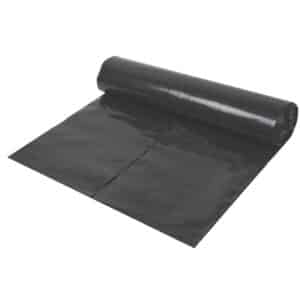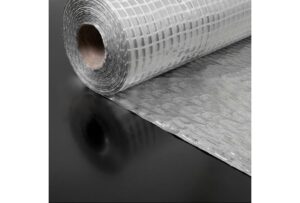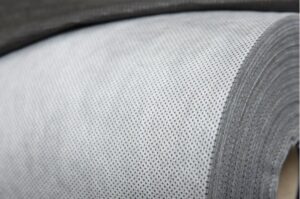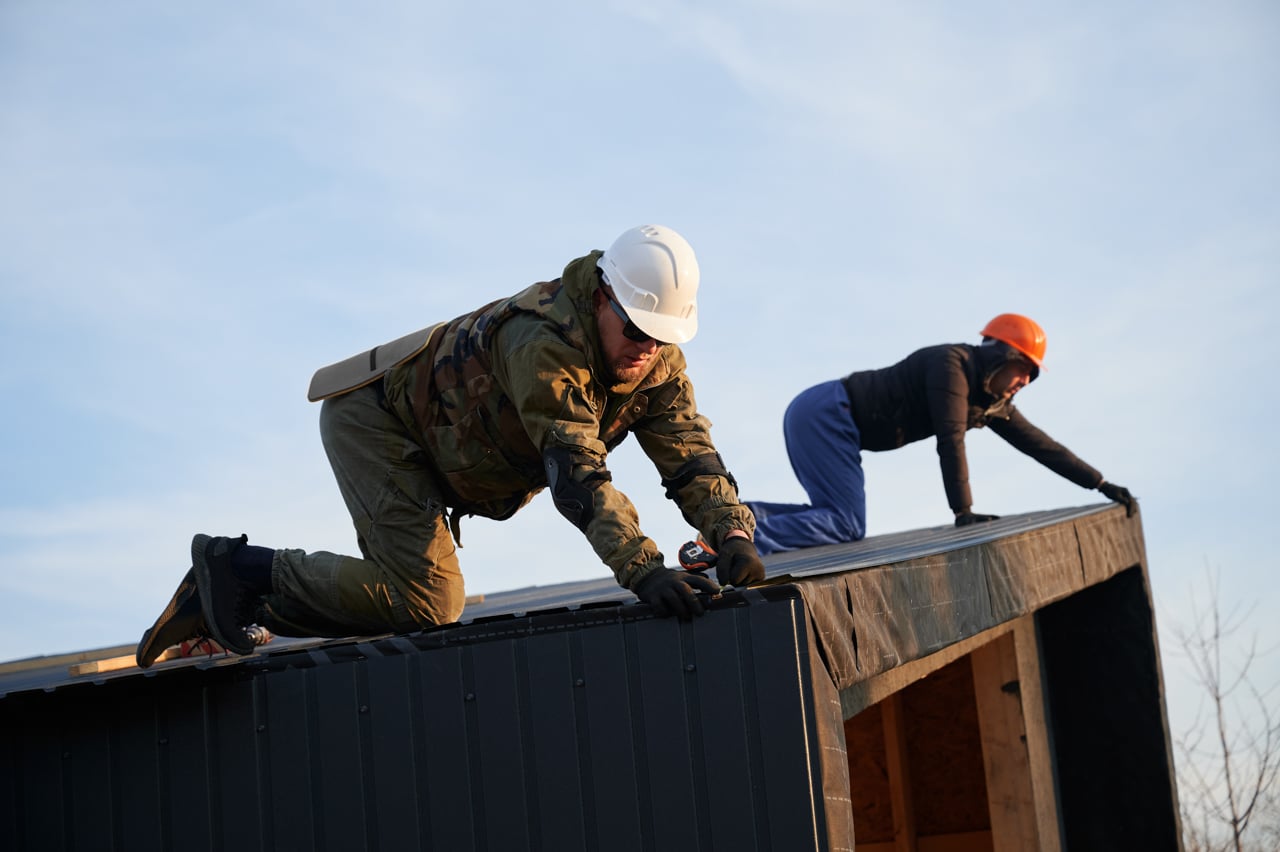29 Mar 2024
Mastering Membrane Roof Waterproofing Techniques
Waterproofing is a crucial aspect of construction and building maintenance. Without proper waterproofing, structures can be susceptible to water damage, mold growth, and structural deterioration.

One of the essential tools in waterproofing is a waterproofing membrane. In this blog, we will explore the benefits and applications of waterproofing membranes, specifically focusing on their role in construction, the key components of a waterproofing membrane, the science behind vapor permeable membranes, and practical applications. We will also discuss the installation process and factors to consider when choosing the right waterproofing solution for your needs. Let’s dive in and explore the world of waterproofing membranes and their significance in building construction and maintenance.
Defining Waterproofing Membrane
A waterproofing membrane is a type of membrane used in construction to prevent water penetration into a building. It acts as a barrier, protecting the building from water damage and potential structural issues. There are various types of waterproofing membranes available, such as polyurethane membrane and bitumen membrane, each with its own unique properties and advantages. These membranes are designed to be durable, resistant to moisture, and capable of providing a reliable waterproofing solution for a variety of applications.
The Role of Waterproofing Membranes in Construction
Waterproofing membranes play a critical role in ensuring the longevity of building structures. Whether it’s a commercial building, a residential property, or an industrial facility, waterproofing membranes are essential for protecting the building from water infiltration and associated damages. These membranes are commonly used in areas such as roofs and walls, where water ingress is a common issue. By creating a waterproof barrier, they prevent water from seeping into the building, thus avoiding potential damage, mold growth, and structural issues. The application of waterproofing membranes in construction is a preventive measure that safeguards against future water-related issues, providing durability and protecting the building’s integrity.
Key Components of a Waterproofing Membrane
Key waterproofing membrane components range from polyurethane to fiberglass, offering diverse options for different needs. Elastomeric membranes excel in waterproofing, while fiberglass provides robust tensile strength and durability. Selection criteria often consider substrate specifics and environmental factors to ensure optimal performance. These membranes play a crucial role in preventing leaks and safeguarding the integrity of structures against water damage.
The Science Behind Vapour Permeable Membranes
Understanding the science behind vapour permeable membranes is crucial for their effective application. These membranes allow moisture vapour to pass through, preventing condensation buildup and promoting a healthier indoor environment. By regulating humidity levels, these membranes contribute to maintaining the structural integrity of a building while also enhancing energy efficiency. The materials used, such as polyurethane membrane or novia black, play a significant role in ensuring durability and performance. Incorporating these advanced technologies in construction projects can lead to sustainable outcomes and improved comfort for occupants.
How it Works
Understanding the functionality of waterproofing membranes involves the utilization of micropores to repel water droplets while permitting vapor transmission. By structurally inhibiting liquid water intrusion, these membranes safeguard buildings against moisture damage. The efficiency in moisture management plays a pivotal role in enhancing membrane performance. Polymer-based membranes exhibit exceptional water resistance properties, ensuring effective insulation and corrosion prevention within structures. This intricate process not only protects buildings but also contributes to their longevity and structural integrity.
Why Choose Vapour Permeable Membranes
When considering waterproofing solutions for buildings, opting for vapour permeable membranes offers various advantages. These membranes play a crucial role in enhancing energy efficiency within a building by regulating moisture levels effectively. Additionally, they help reduce the risks associated with condensation and mold growth, ensuring a healthier indoor environment. With UV resistance properties, these membranes exhibit long-lasting performance even under harsh weather conditions. Their elasticity allows them to adapt to building movements seamlessly, providing a durable and reliable waterproofing solution. Such membranes are a smart choice for sustainable and efficient construction practices.
Our Product: High Performance Vapour Permeable Membrane
Introducing our high-performance vapour permeable membrane, an advanced solution for efficient roofing. Crafted to enhance green roofs, this polyurethane membrane offers superior protection against ozone and blisters. With enhanced drainage capabilities, it’s ideal for various applications, from roof tiles to asphalt. Designed for durability, it incorporates fibreglass and polypropylene for added strength. Our product ensures optimal waterproofing for any building. Explore our range today for quality solutions in roof waterproofing.
Product Overview
Incorporating advanced manufacturing techniques, our membranes offer consistent quality across various thickness options, meeting stringent industry standards. Adaptable to diverse roof substrates, the product’s flexibility is enhanced by different width choices, catering to a range of roofing requirements. With a focus on versatility and performance, our membranes ensure a reliable waterproofing solution for a variety of construction projects.
Key Features and Benefits
Providing dependable waterproofing and moisture control, membranes offer superior UV resistance for long-lasting performance. Their breathability mitigates trapped moisture risks, while flexibility and elasticity accommodate building movements seamlessly. Lightweight characteristics streamline handling and installation processes, enhancing overall efficiency. These features and benefits underscore the importance of selecting the right waterproofing membrane for optimal construction outcomes.
Certifications and Approvals
Our waterproofing membranes adhere to industry benchmarks for quality and performance, backed by certifications affirming their dependability. Approved by governing bodies for both commercial and residential ventures, they comply with all building codes and regulations for added assurance. Rigorous testing guarantees that our membranes fulfill essential criteria, offering peace of mind to users seeking reliable waterproofing solutions.
Practical Applications of Waterproofing Membranes
Green roofs, a popular application of waterproofing membranes, offer environmental benefits and insulation. These membranes are essential for protecting a building’s structural integrity by preventing water damage. Installation can vary depending on the type of membrane used, such as polyurethane, EPDM, or bitumen. Incorporating waterproofing membranes under roof tiles like Novia Black ensures long-lasting protection against leaks. Proper drainage systems play a crucial role in the effectiveness of these membranes against water ingress and blisters.
Cold and Warm Roof Applications
Utilizing waterproofing membranes in cold and warm roof applications is crucial for insulating buildings and preventing heat loss, especially in cold climates. These versatile membranes also play a vital role in safeguarding structures against moisture infiltration in warmer regions. By selecting the appropriate type of membrane, tailored to specific insulation requirements, a building can maintain a comfortable indoor environment while ensuring effective protection. Whether it’s for cold roof insulation or moisture resistance in warm roof applications, these membranes are indispensable for enhancing the longevity and performance of roofs.
Other Common Uses of Waterproofing Membranes
Common applications of waterproofing membranes include safeguarding foundation walls and basements from water seepage, shielding roofs to prevent leaks and weather-induced harm, protecting bathrooms and showers from water-related damages and mold growth. Additionally, these membranes find utility in securing swimming pools and water features against leaks and potential surrounding damage. Industrial environments also benefit from their usage by ensuring protection from chemical spills and other hazardous substances. These varied applications underscore the versatility and importance of waterproofing membranes in diverse settings.
Installation Process for Waterproofing Membranes
Preparing for the Installation: Initially, ensure the surface is clean and dry. Apply a primer if needed before starting the process. Begin Applying the Membrane: Follow manufacturer guidelines for application techniques. Roll out the membrane carefully, eliminating any wrinkles or bubbles. Maintenance and Inspection: Post-application, inspect for any defects like blisters. Regular maintenance is vital to prolong the membrane’s lifespan and effectiveness.
Preparing the Surface
To begin the surface preparation process, start by thoroughly cleaning the area where the membrane will be applied. It is crucial to address any cracks or imperfections on the surface to enhance the durability of the membrane. Ensuring that the surface is completely dry post-cleaning is essential for optimal membrane adhesion. Smooth out any uneven surfaces to create a uniform base for the membrane, and remember to remove all debris and loose particles before applying the membrane.
Applying the Membrane
Ensuring the membrane’s effectiveness involves adhering to recommended application techniques. Maintaining a uniform thickness during application is vital to avoid weak spots. Properly overlapping membrane sections is essential to prevent water penetration. Checking for bubbles or wrinkles ensures a smooth finish post-application. Utilizing appropriate tools like rollers aids in the membrane’s proper adhesion.
Post-Application Maintenance and Inspection
Post-installation upkeep of your waterproofing membrane is critical for its longevity. Regular checks unveil early damage signs, aiding in timely repairs to thwart leakages. Setting up a maintenance routine elongates the membrane’s life span while annual inspections nip deterioration in the bud. Tracking maintenance records ensures a comprehensive overview of your membrane’s condition over time. Take charge of your membrane’s well-being with diligent post-application care.
Choosing the Right Waterproofing Solution for Your Needs
When selecting the optimal waterproofing solution, consider factors such as the building’s specific requirements and the environmental conditions it will face. Evaluate the type of membrane needed, whether it’s polyurethane, EPDM, or bitumen. Explore options like green roofs for sustainable solutions. Ensure compatibility with existing roof tiles or masonry. Factor in drainage needs and potential ozone exposure. Make an informed decision based on the long-term benefits and not just upfront costs.
Factors to Consider When Choosing a Waterproofing Membrane
When selecting a waterproofing membrane, it’s crucial to evaluate its compatibility with the substrate for optimal performance. Environmental conditions of installation play a vital role in choosing the right membrane. The method of application needed can influence the ease of installation. Assessing the membrane’s chemical resistance is key for specific applications, while flexibility and elasticity are essential for adapting to structural movements. These considerations are fundamental in selecting the most suitable waterproofing membrane for your project.
Making the Best Choice: Our Product
Choosing an ideal waterproofing solution is crucial for any construction project. Our product stands out by offering superior protection against water infiltration, ensuring durability in various environments due to its resistance to UV rays. The easy application process guarantees hassle-free installation, providing long-lasting performance and reliability. Additionally, our membrane meets industry standards, giving you peace of mind with its quality accreditations. Make the best choice for your waterproofing needs with our top-notch product.
How can waterproofing save money in the long run?
Investing in quality waterproofing ensures prevention of costly water damage repairs and extends structure lifespan, reducing maintenance expenses. Effective waterproofing minimizes future repair costs, enhances property value, and choosing the right system upfront can save on recurring maintenance expenditures.
Conclusion
In conclusion, waterproofing membranes play a crucial role in construction by providing a protective barrier against water damage. The use of high-performance vapor permeable membranes offers several benefits, including enhanced durability, improved energy efficiency, and reduced moisture buildup. Our product, a top-quality vapor permeable membrane, is designed to meet industry standards and has been certified for its performance and reliability. With practical applications in cold and warm roof installations, as well as other common uses, this waterproofing solution offers long-term protection for your building. By choosing the right waterproofing membrane and following proper installation and maintenance procedures, you can save money in the long run by avoiding costly repairs and damage. Invest in quality and ensure the longevity of your construction projects with our trusted waterproofing membranes.





